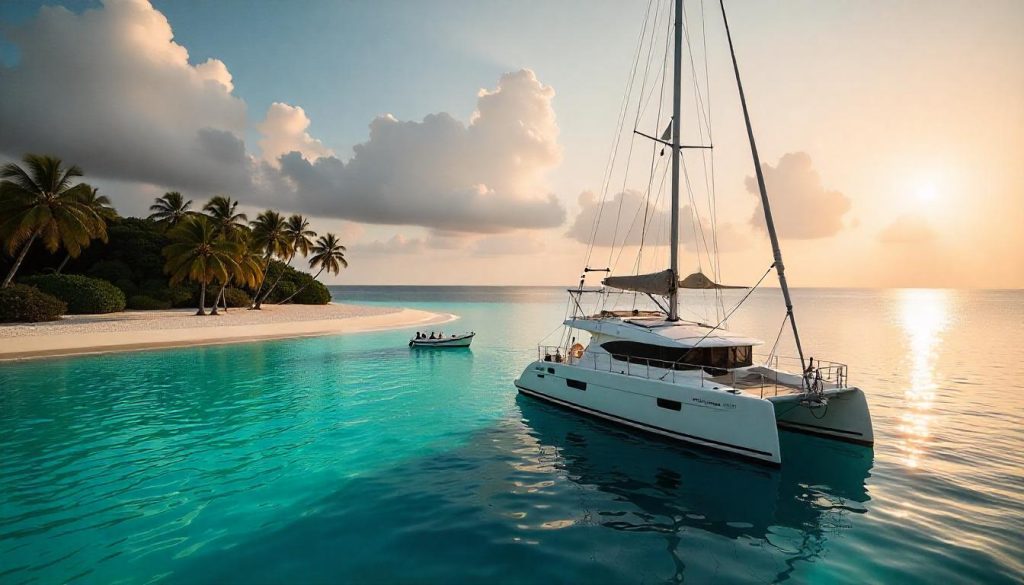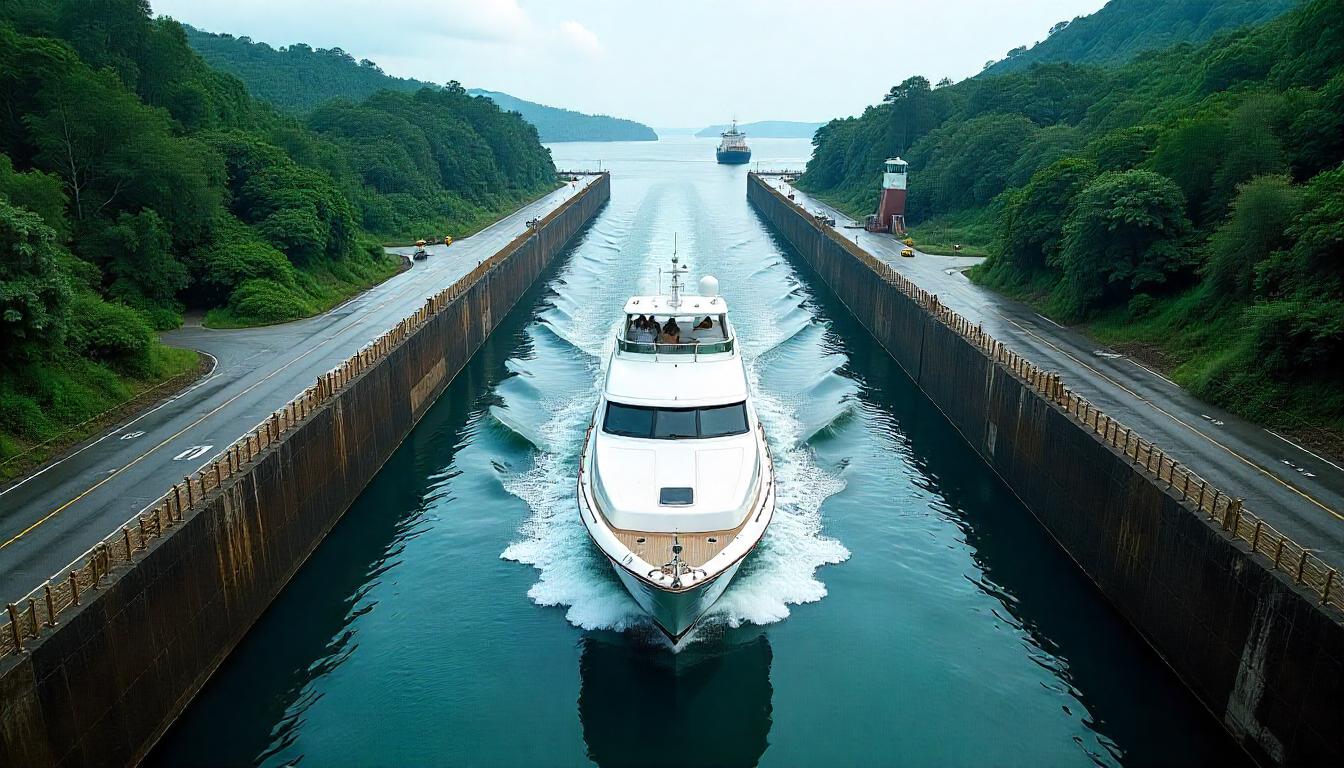对于许多游艇爱好者来说,航行巴拿马运河是一生一次的经历。这一工程奇迹连接着大西洋和太平洋,将探险、历史和迷人的风景独特地融合在一起。对于游艇爱好者来说,运河不仅仅是一条通道,更是一次穿越世界上最具标志性水道的旅程。让我们一起来探索是什么让巴拿马运河成为如此非凡的冒险之旅。
1.为什么要在巴拿马运河上航行?
1.1 两大洋之间的门户
巴拿马运河是连接大西洋和太平洋的重要通道,为往来于大西洋和太平洋之间的船只节省了数千英里的航程。对于游艇爱好者来说,巴拿马运河为他们提供了一个亲身体验这条历史航线的机会。
此外,运河上错综复杂的水闸和水道系统也让人领略到人类的聪明才智和卓越的工程技术。
1.2 历史之旅
巴拿马运河的航行不仅关乎现在,也是一次时光倒流。运河于 1914 年竣工,在全球贸易和航海史上发挥着举足轻重的作用。探索运河水域让您在享受现代便利的同时,还能与过去的历史联系在一起。
此外,周围的热带雨林和岛屿也为游客提供了自然的背景,增强了探险的乐趣。
2.巴拿马运河航行的主要挑战
2.1 复杂的锁系统
在巴拿马运河上航行的主要挑战之一是如何应对复杂的船闸系统。船闸通过一系列舱室提升和降低船只,需要精确的导航以及与运河当局的协调。
对于较小的游艇来说,这一过程可能令人生畏,但经验丰富的船长和顾问可以提供帮助。
2.2 天气和交通状况
运河交通繁忙,大型货轮与游艇共用航道。此外,热带气候条件会带来突如其来的暴雨或强风,使航行更具挑战性。
不过,一旦成功穿越运河,这些条件也会增加您的成就感。
3.巴拿马运河航行小贴士
3.1 提前计划
起航前,仔细规划行程至关重要。研究运河的调度系统,因为过境需要预订。此外,确保您的游艇符合所有必要的要求,如尺寸和安全标准。
例如,聘请一名熟悉运河的专业顾问或船长可以使整个过程更加顺利,压力更小。
3.2 为船员做好准备
巴拿马运河航行需要团队合作和沟通。确保您的船员做好充分准备,并了解他们在运输过程中的职责。分配任务,如缆线处理、与船闸操作员沟通以及监控船只位置。
此外,还要向机组人员介绍安全协议,以最大限度地降低旅途中的风险。
3.3 尊重环境
巴拿马运河地区生物多样性丰富,拥有茂密的热带雨林和种类繁多的野生动物。在运河上航行时,一定要尊重环境,避免丢弃垃圾,尽量减少对生态环境的影响。
使用环保产品和遵守当地法规可确保保护这一独特的生态系统。

4.巴拿马运河航行的景观亮点
4.1 加通湖
加通湖是世界上最大的人工湖之一,也是运河的核心景观。在平静的水面上航行,您将被茂密的雨林和丰富的野生动物(包括猴子、树懒和珍奇鸟类)所包围。
这种宁静的环境与运河上熙熙攘攘的船闸和工业区段形成了鲜明的对比。
4.2 库莱布拉切段
库莱布拉切口是大陆分水岭上的一条狭窄通道。这一工程壮举既令人敬畏,又极具挑战性,因为船只必须在狭窄的空间内小心航行。
途经此地时,您将领略到打造这段运河标志性景观的技巧和努力。
5.运河附近的隐秘宝藏
5.1 圣布拉斯群岛
圣布拉斯群岛位于运河大西洋入口附近,是游艇爱好者的天堂。这些纯净的岛屿拥有白沙滩、碧绿的海水和生机勃勃的珊瑚礁。
您可以在运河过境之前或之后停泊在这里,享受浮潜、潜水的乐趣,或者仅仅是在天堂里放松一下。
5.2 甘博亚雨林度假村
甘博亚位于运河中点附近,是甘博亚雨林度假村的所在地。该地区提供生态旅游机会,包括滑索、观鸟和热带雨林导游。
在甘博亚游览,您可以沉浸在运河周围的自然美景中。
6.餐饮和娱乐选择
当地美食
巴拿马运河地区有各种美味的当地菜肴。您可以品尝 Sancocho(一种丰盛的炖鸡)、腌鱼和每天从附近海域捕获的新鲜海鲜等特色美食。
运河沿岸的许多游艇码头和城镇还设有提供国际美食的餐馆,以满足不同口味的需求。
夜生活和活动
运河本身就是一个活动中心,而附近的城镇,如巴拿马城,则提供充满活力的夜生活和文化活动。您可以参加节日庆典、探索屋顶酒吧或欣赏现场音乐表演。
如果想度过一个宁静的夜晚,可以停靠在码头,在游艇甲板上观星或享受篝火晚会。
7.结束语拥抱冒险
2025 年的巴拿马运河航行是一次集历史、工程和自然美景于一体的探险。虽然会遇到各种挑战,但适当的准备工作和对环境的尊重可以确保旅程的安全和收获。
因此,确定航线,享受巴拿马运河航行的快感,创造终生难忘的回忆吧。

 航行巴拿马运河:游艇之旅">
航行巴拿马运河:游艇之旅">
